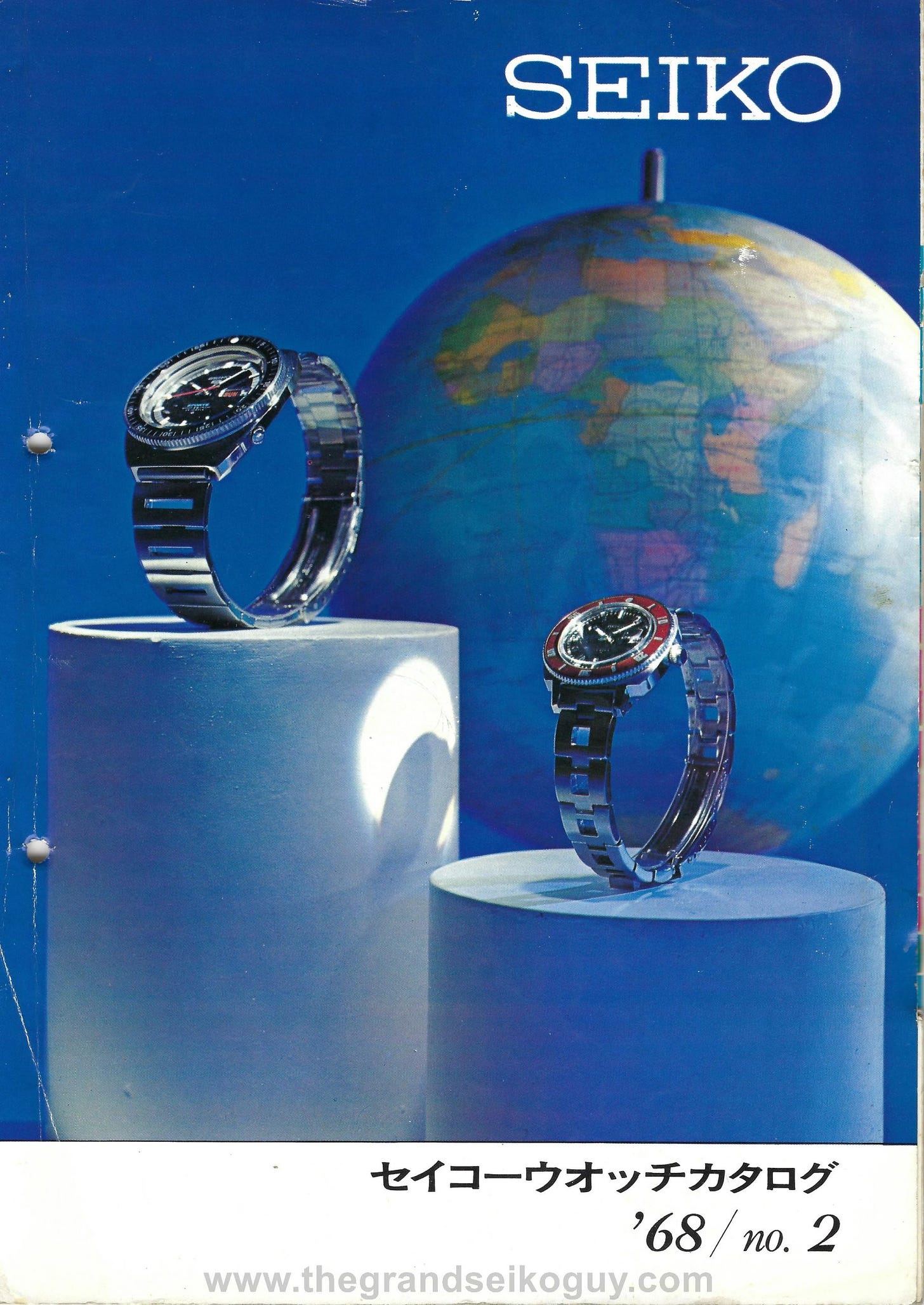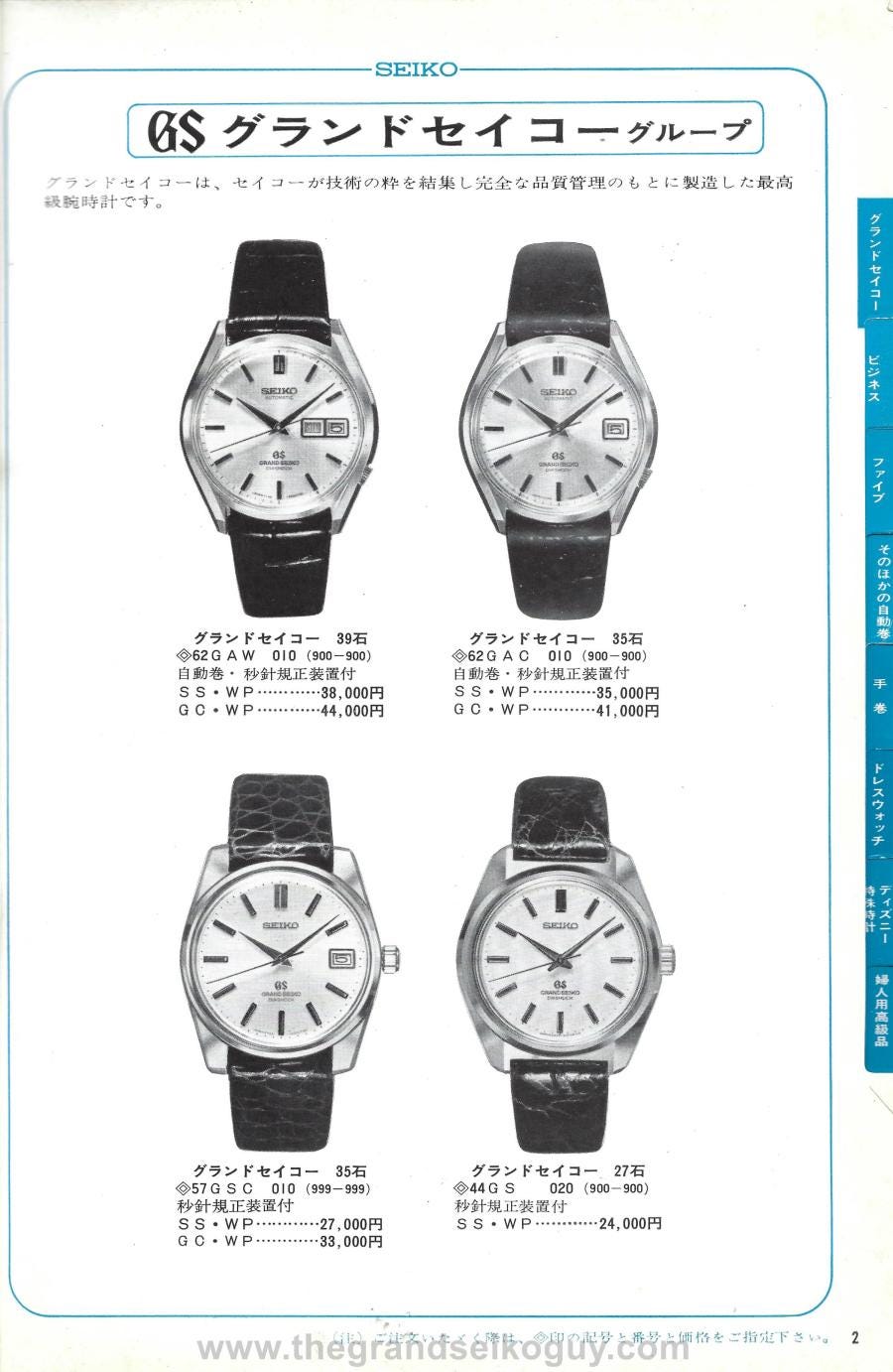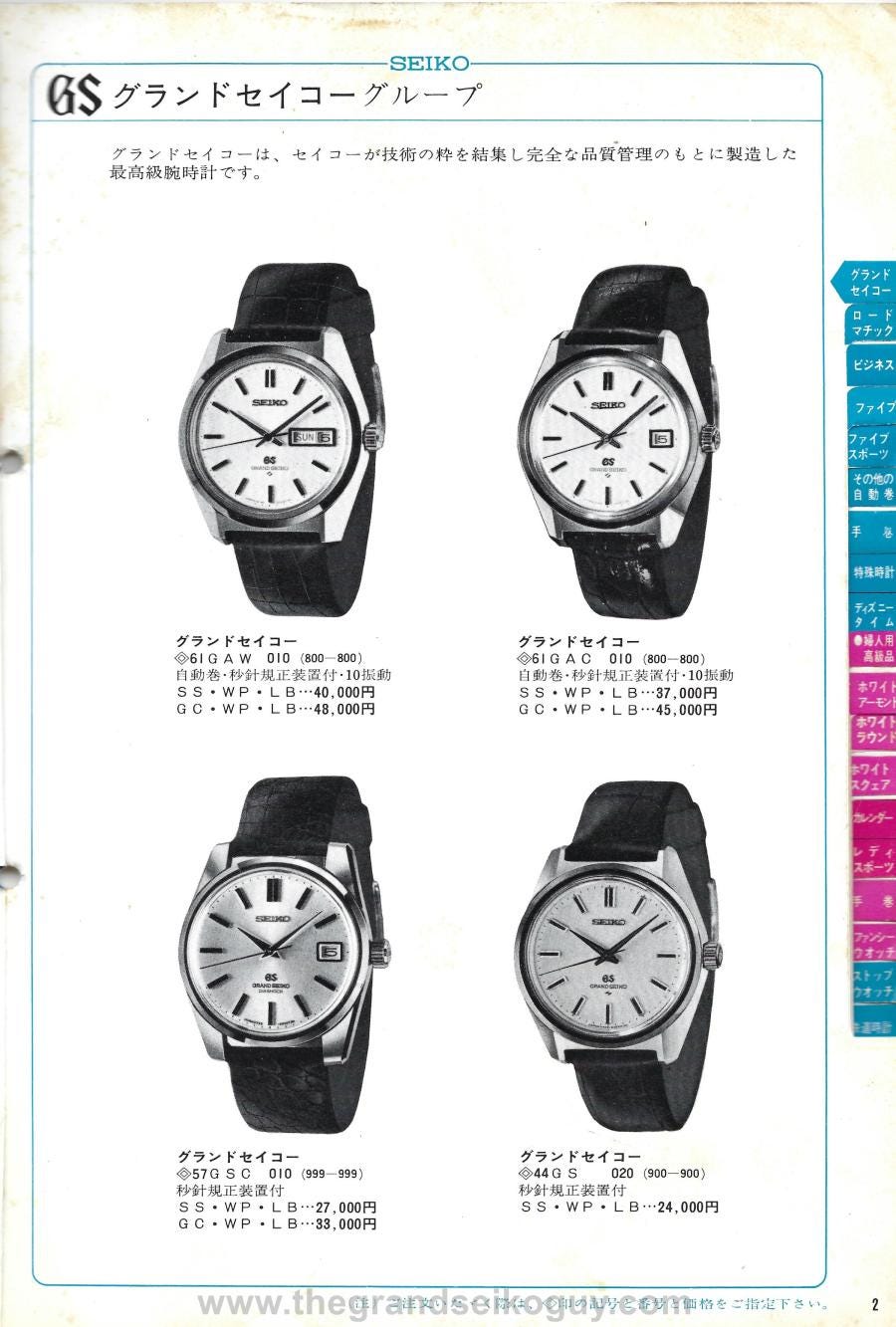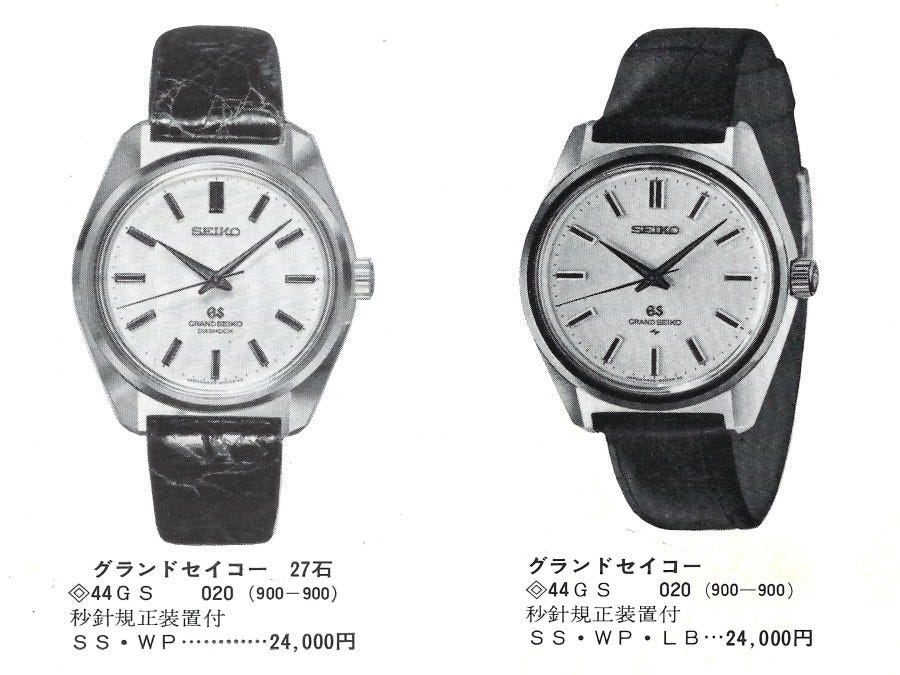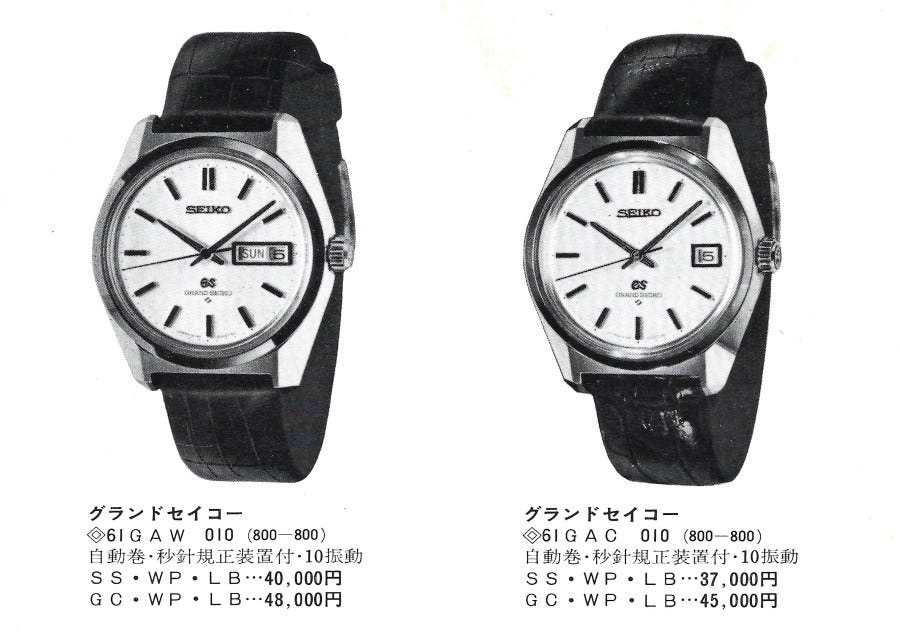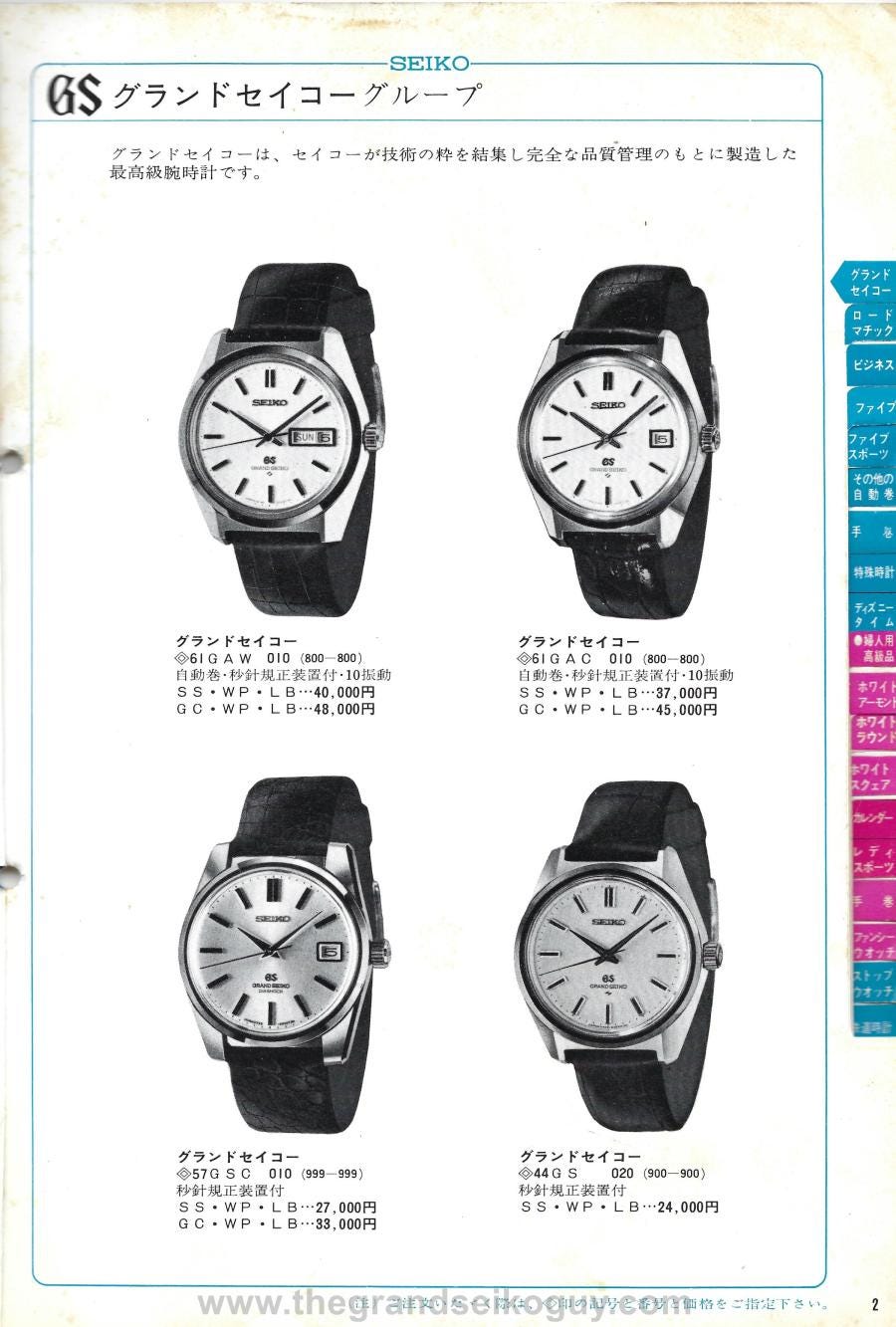Preamble
For the benefit of those subscribers who have signed up recently, each Tuesday I publish an article featuring scans of vintage Grand Seikos that appeared in the Seiko catalogues of the 1960’s and 1970’s.
Although based on the articles originally published on TGSG website, these articles will be updated where appropriate with additional knowledge gained in the three or so years since they were first made available.
Additionally, since I now have the complete set of the catalogues, I am able to publish these articles in the correct chronological order - something that wasn’t possible when posting to the main website since, when starting out documenting the catalogues, I hadn’t completed my collection of them.
You can view the previously published newsletters in this series here.
The Seiko 1968 no.2 catalogue
We remarked at the end of our previous newsletter, featuring the first Seiko catalogue from 1968, that the four watches pictured, coming from three different Grand Seiko series, all had a consistent dial layout. For ease of reference, I will share again here the single page from that catalogue that featured vintage Grand Seiko references -
Note how all watches have the exact same layout of textual content on the dial, save for an additional line of text identifying the automatic movement of the 62GS series.
As we are about to see, that consistency would prove to be rather fleeting. Here’s the page presenting the Grand Seiko references in the second catalogue of 1968 -
Let’s start with the second row.
Although the same two references feature in both volume 1 and volume 2 of the 1968 catalogue, only one of them remains of the same design.
Pictured in the bottom left of the page is that watch – the 5722-9991, with both the stainless steel and cap gold variants mentioned. Following a production run that commenced in 1963 with the 43999, the 57GS series has its swansong in this catalogue – it would not appear again.
Next to it is a familiar watch with an unfamiliar face. The 4420-9000 first appeared in the supplement to the 1967 volume 2 catalogue, but here, just 6 or so short months after its introduction, we see that Seiko decided to change the layout on the dial.
Here’s a comparison of the 4420-9000 from the first catalogue of 1968 (on the left), alongside the same reference from this one -
The early examples of the 4420-9000 had the same textual layout on the dial as the 5722-9991. An applied Seiko logo up top, and and applied GS logo down below, with the text “Grand Seiko” and “Diashock” on separate lines underneath.
Later examples of the 44GS references – there were both steel cased 4420-9000 and cap gold cased 4420-9990 (a reference that is one of the very few vintage Grand Seikos to never make an appearance in a catalogue) – removed the word “Diashock” from the dial, and in its place featured the logo of the Daini Seikosha factory.
As with the 57GS, this catalogue was the last to feature a 44GS reference, making it the shortest production run of any vintage Grand Seiko series, and contributing significantly to the collectibility of the watches.
Prior to the introduction of this dial variant of the 4420-9000, no Grand Seiko featured the logo of the company responsible for producing the watch (Daini or Suwa Seikosha) on the dial.
From this point on, they all did.
The new dial layout seen on the later 4420-9000’s - an applied SEIKO logo at 12, and an applied GS logo at 6, with the text “GRAND SEIKO” and factory logo beneath it - was the exact same layout used for the two new references featured at the top of the catalogue page.
We can see by following the presentation of references from one catalogue to the next that the 61GS series was very clearly introduced to directly supersede the 62GS models – something that wouldn’t necessarily be directly obvious were we to simply examine production dates of the watches. Clearly with their 36,000 bph movements the 6145A (date) and 6146A (day-date) calibers were a significant step up from the low beat 19,800 bph 6245A (date) and 6246A (day-date) calibers they replaced.
Additionally, the design of the watches closely follows the famed “Grammar of Design” first introduced with the 44GS – indeed, were it not for the lack of a date, at first glance it would be quite challenging to tell a 4420-9000 and a 6145-8000 apart.
As can be seen from the descriptions, both date and day-date examples of the 61GS references were available in stainless steel or cap gold cases.
Pricing wise, there is a premium on the replaced 62GS series. The base, date only, model in stainless steel goes up from 38,000 yen to 40,000 – a fairly modest bump when you consider the changes under the hood. If you wanted a day indication to go alongside the date, that premium remained the same at an additional 3,000 Yen, but if you opted for the cap gold cased models, you would now be paying an additional 8,000 Yen on top of the stainless steel equivalent for the privilege, rather than the additional 6,000 Yen that we find on the earlier series.
Next week, we will find out that this new dial layout design proves to be just as ephemeral as the one that it replaced.
Gallery
Presented below is a scan of the single page from the 1968 Number 2 catalogue that features Grand Seiko references.




